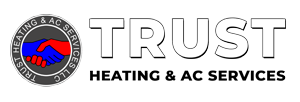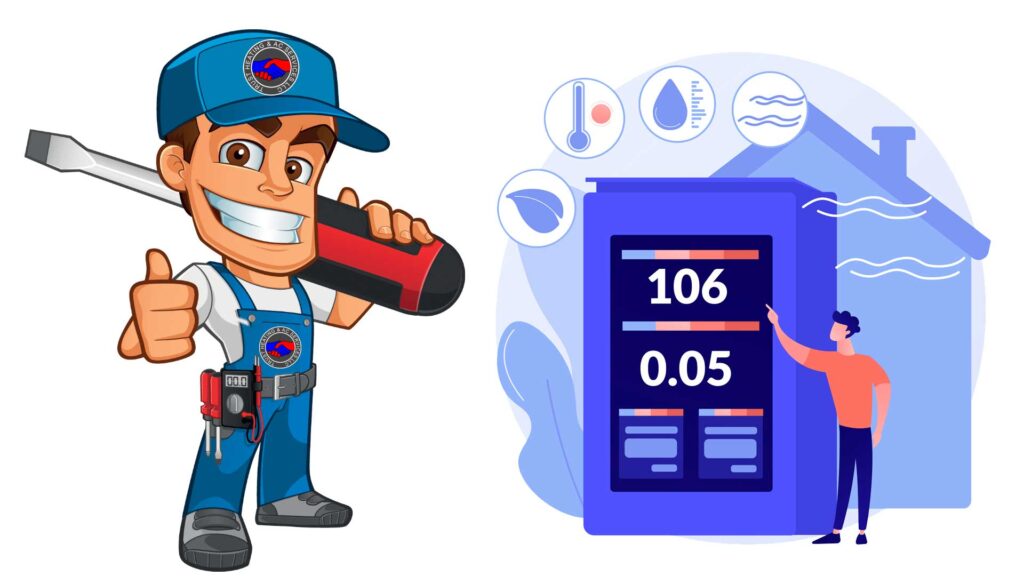A malfunctioning thermostat can disrupt the efficient operation of your HVAC (Heating, Ventilation, and Air Conditioning) system, affecting comfort and energy efficiency. Understanding the causes, symptoms, and solutions is key to maintaining an effective HVAC system.
Causes of Thermostat Malfunction
- Dead or Weak Batteries
Many thermostats operate on batteries. If the batteries are dead or weak, the thermostat may stop functioning or work inconsistently. - Incorrect Placement
Placement of the thermostat in direct sunlight, near drafts, or close to heat sources can lead to inaccurate temperature readings. - Wiring Issues
Loose or damaged wires can disrupt the communication between the thermostat and the HVAC system. - Outdated or Faulty Thermostat
Older models or defective thermostats can fail to regulate temperature accurately, especially if they are not calibrated or maintained. - Software Glitches
Smart thermostats may experience software issues, leading to erratic behavior, such as failing to adjust temperature settings or displaying incorrect readings.
Symptoms of a Malfunctioning Thermostat
- Inconsistent Temperature
Rooms may feel too hot or too cold despite the thermostat settings. - HVAC System Short Cycling
The system frequently turns on and off without maintaining the desired temperature, indicating a communication issue. - Unresponsive Thermostat
The thermostat does not turn on, fails to adjust settings, or shows no display. - Incorrect Temperature Readings
The thermostat displays temperatures that do not match the actual room conditions. - Increased Energy Bills
A malfunctioning thermostat may cause your HVAC system to work harder than necessary, leading to higher energy consumption.
Troubleshooting and Solutions
- Replace Batteries
Start by replacing the thermostat batteries if it is battery-powered. This simple fix often resolves common issues. - Check Thermostat Placement
Ensure the thermostat is placed away from direct sunlight, drafts, or heat-emitting appliances. Relocating it can improve accuracy. - Inspect and Repair Wiring
Turn off the power to the HVAC system and inspect the wiring for any loose connections or visible damage. If necessary, consult a professional for repairs. - Recalibrate the Thermostat
For mechanical thermostats, recalibration might be needed. Follow the manufacturer’s instructions or seek professional assistance. - Reset or Update Software
For smart thermostats, resetting or updating the software can resolve glitches. Refer to the user manual or contact customer support. - Upgrade the Thermostat
If your thermostat is outdated, consider upgrading to a newer, more efficient model. Smart thermostats offer features like remote control and learning algorithms to improve energy efficiency. - Schedule Professional Maintenance
If basic troubleshooting does not resolve the issue, consult an HVAC technician to diagnose and repair the problem.
Preventive Measures
- Regular Maintenance
Schedule routine HVAC system and thermostat inspections to identify and fix potential issues early. - Clean the Thermostat
Dust and debris can interfere with the thermostat’s sensors. Gently clean it periodically with a soft cloth. - Monitor Performance
Keep an eye on your HVAC system’s behavior and energy bills. Sudden changes may indicate thermostat problems. - Follow Manufacturer Guidelines
Adhere to the manufacturer’s recommendations for installation, maintenance, and operation to ensure optimal performance.
Conclusion
A malfunctioning thermostat can compromise your HVAC system’s efficiency and your comfort. By identifying the root cause and addressing it promptly, you can restore functionality and prevent further complications. Regular maintenance and upgrades to modern thermostat models can enhance the reliability and performance of your HVAC system, ensuring a comfortable indoor environment and energy efficiency.

